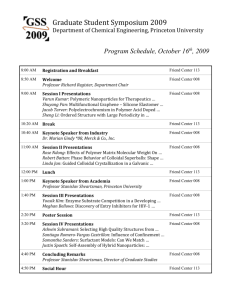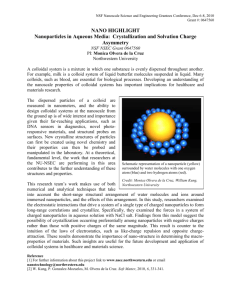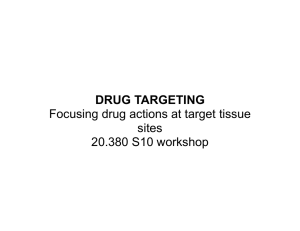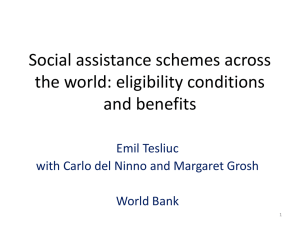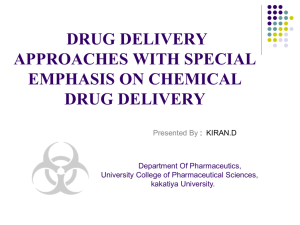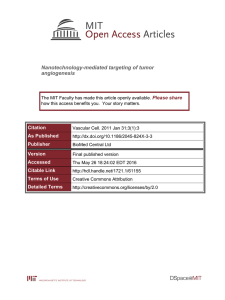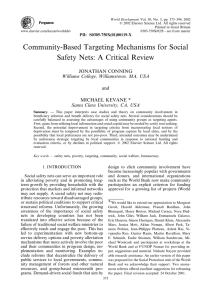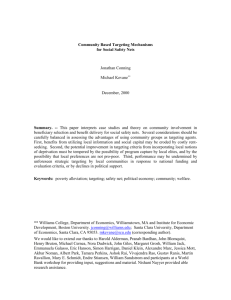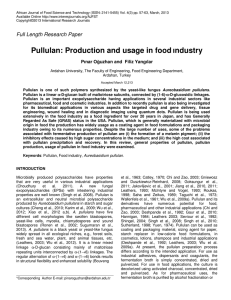Over the past years, multifunctional nanotechnology has emerged
advertisement
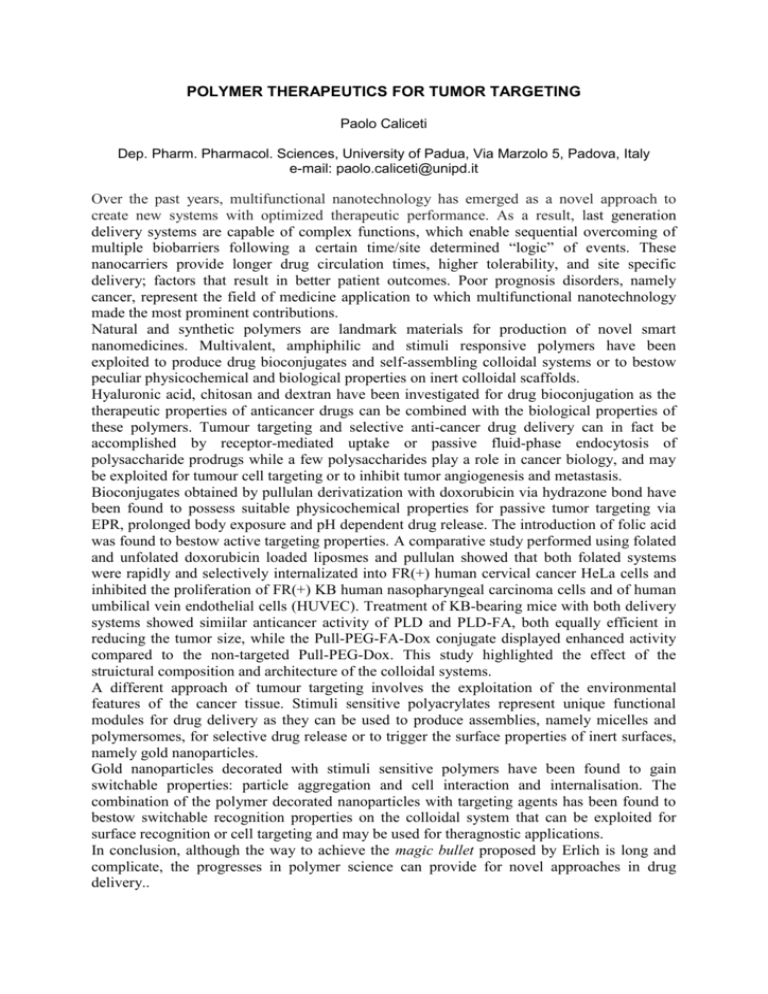
POLYMER THERAPEUTICS FOR TUMOR TARGETING Paolo Caliceti Dep. Pharm. Pharmacol. Sciences, University of Padua, Via Marzolo 5, Padova, Italy e-mail: paolo.caliceti@unipd.it Over the past years, multifunctional nanotechnology has emerged as a novel approach to create new systems with optimized therapeutic performance. As a result, last generation delivery systems are capable of complex functions, which enable sequential overcoming of multiple biobarriers following a certain time/site determined “logic” of events. These nanocarriers provide longer drug circulation times, higher tolerability, and site specific delivery; factors that result in better patient outcomes. Poor prognosis disorders, namely cancer, represent the field of medicine application to which multifunctional nanotechnology made the most prominent contributions. Natural and synthetic polymers are landmark materials for production of novel smart nanomedicines. Multivalent, amphiphilic and stimuli responsive polymers have been exploited to produce drug bioconjugates and self-assembling colloidal systems or to bestow peculiar physicochemical and biological properties on inert colloidal scaffolds. Hyaluronic acid, chitosan and dextran have been investigated for drug bioconjugation as the therapeutic properties of anticancer drugs can be combined with the biological properties of these polymers. Tumour targeting and selective anti-cancer drug delivery can in fact be accomplished by receptor-mediated uptake or passive fluid-phase endocytosis of polysaccharide prodrugs while a few polysaccharides play a role in cancer biology, and may be exploited for tumour cell targeting or to inhibit tumor angiogenesis and metastasis. Bioconjugates obtained by pullulan derivatization with doxorubicin via hydrazone bond have been found to possess suitable physicochemical properties for passive tumor targeting via EPR, prolonged body exposure and pH dependent drug release. The introduction of folic acid was found to bestow active targeting properties. A comparative study performed using folated and unfolated doxorubicin loaded liposmes and pullulan showed that both folated systems were rapidly and selectively internalizated into FR(+) human cervical cancer HeLa cells and inhibited the proliferation of FR(+) KB human nasopharyngeal carcinoma cells and of human umbilical vein endothelial cells (HUVEC). Treatment of KB-bearing mice with both delivery systems showed simiilar anticancer activity of PLD and PLD-FA, both equally efficient in reducing the tumor size, while the Pull-PEG-FA-Dox conjugate displayed enhanced activity compared to the non-targeted Pull-PEG-Dox. This study highlighted the effect of the struictural composition and architecture of the colloidal systems. A different approach of tumour targeting involves the exploitation of the environmental features of the cancer tissue. Stimuli sensitive polyacrylates represent unique functional modules for drug delivery as they can be used to produce assemblies, namely micelles and polymersomes, for selective drug release or to trigger the surface properties of inert surfaces, namely gold nanoparticles. Gold nanoparticles decorated with stimuli sensitive polymers have been found to gain switchable properties: particle aggregation and cell interaction and internalisation. The combination of the polymer decorated nanoparticles with targeting agents has been found to bestow switchable recognition properties on the colloidal system that can be exploited for surface recognition or cell targeting and may be used for theragnostic applications. In conclusion, although the way to achieve the magic bullet proposed by Erlich is long and complicate, the progresses in polymer science can provide for novel approaches in drug delivery..




